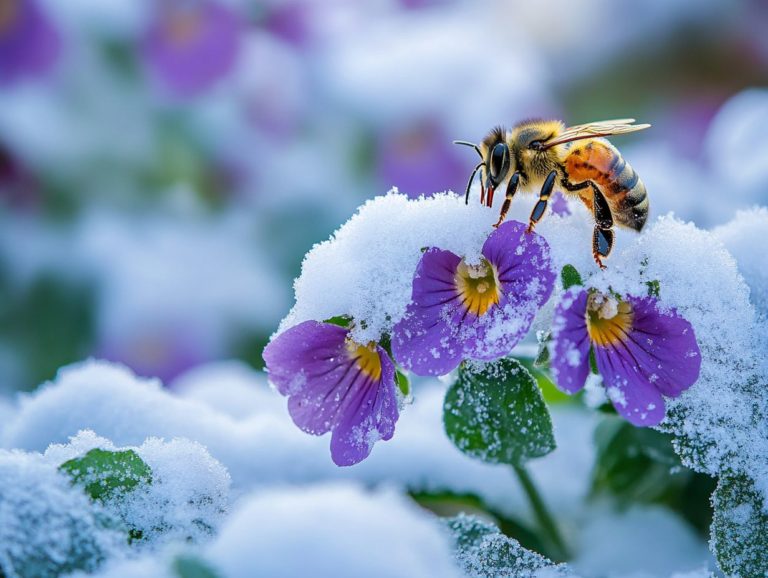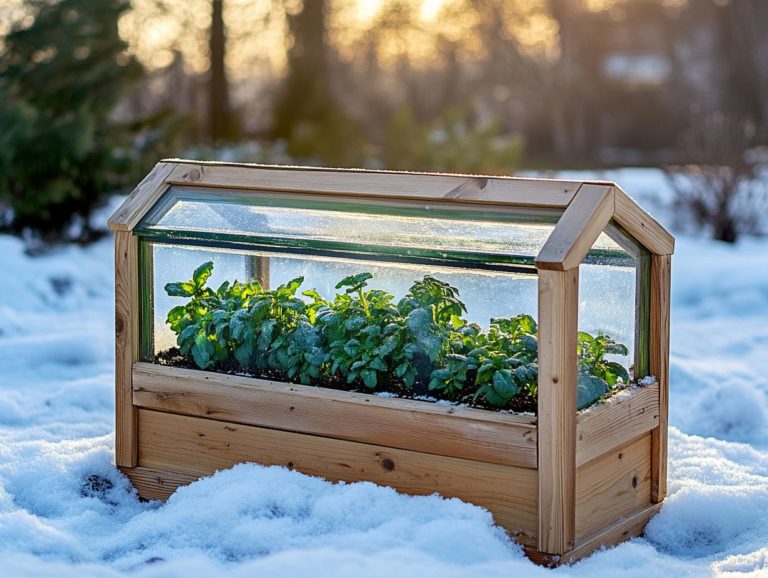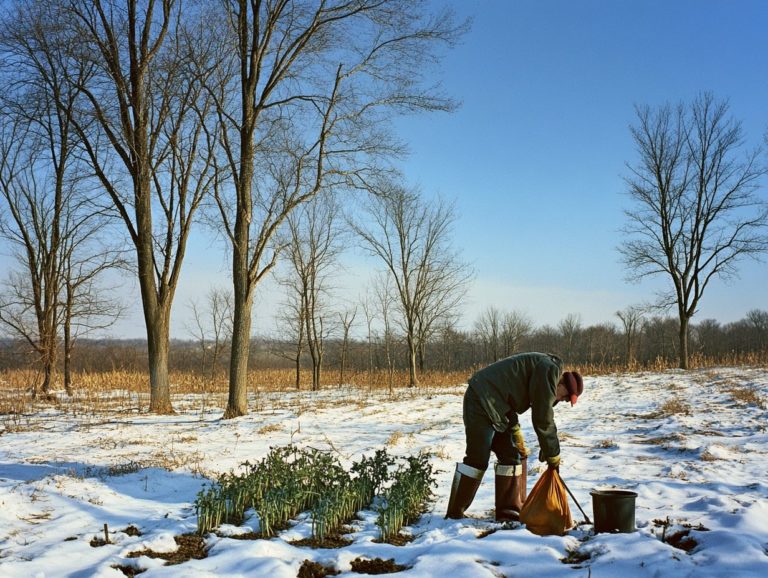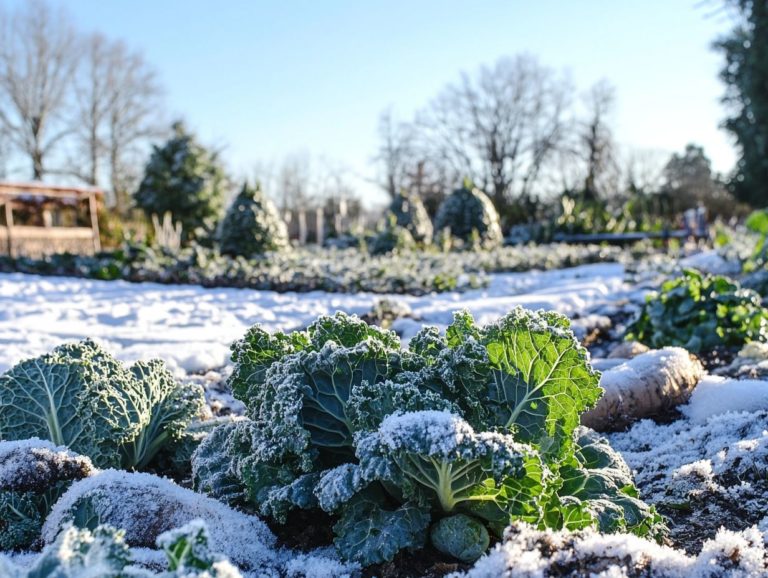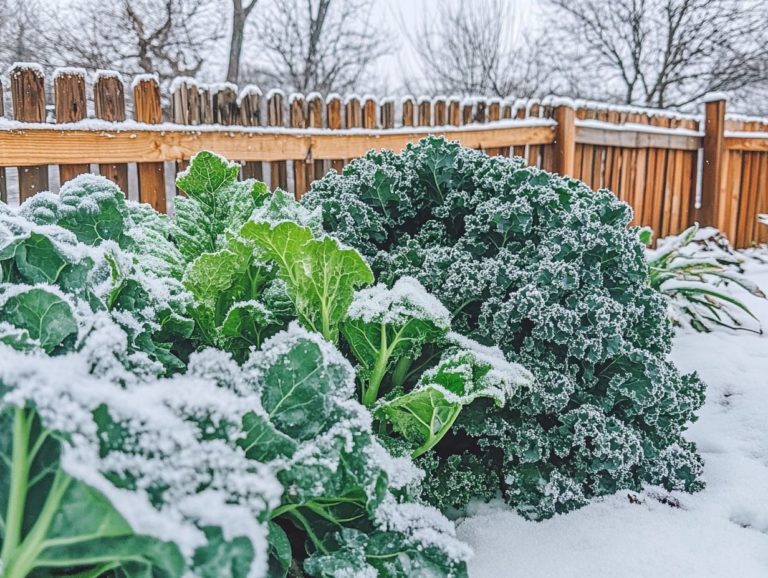Cold-Weather Crop Care: Preparing for Spring
As the seasons shift and the chill of colder weather approaches, you encounter both unique challenges and exciting opportunities in your gardening journey.
This guide serves as your go-to resource for preparing your garden to withstand the frosty months ahead. From clearing and protecting your space to selecting the finest cold-weather crops, you ll explore essential strategies for optimal timing and care that foster robust growth.
You ll discover how to safeguard your plants against frost and snow, ensuring a smooth transition into spring. Embrace the beauty of winter gardening, and keep your green thumb flourishing.
Contents
- Key Takeaways:
- Preparing for Cold Weather
- Choosing Cold-Weather Crops
- Planting and Caring for Cold-Weather Crops
- Protecting Crops During Frost and Snow
- Transitioning to Spring
- Frequently Asked Questions
- What crops should I focus on preparing for spring during the cold weather?
- What are some methods for protecting crops during the cold weather?
- When is the best time to start preparing my crops for spring during the cold weather?
- How can I prevent frost damage to my crops during cold weather?
- What are some tips for maintaining healthy crops during cold weather?
- What can I do to prepare my soil for spring during cold weather?
Key Takeaways:
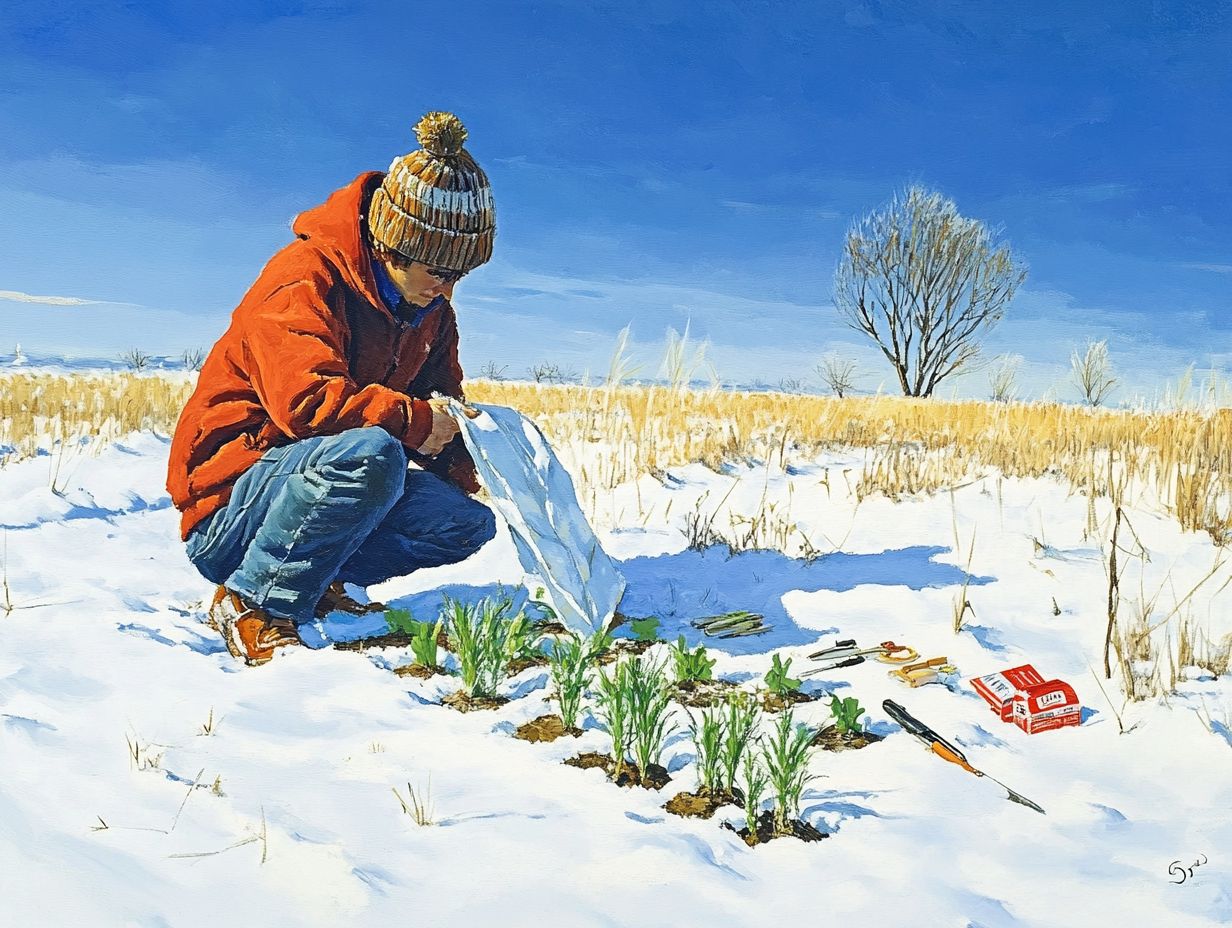
- Protect your garden and crops from harsh winter weather by clearing and covering them properly.
- Choose the right cold-weather crops for your climate to ensure a successful harvest.
- Proper timing and care techniques are crucial for the optimal growth of cold-weather crops.
Preparing for Cold Weather
Preparing for cold weather is essential for any gardener intent on shielding their spring garden from the whims of Mother Nature, especially those unexpected cold snaps. To effectively do this, learn how to prepare your garden for spring thaw, as temperatures potentially dip into the high teens Fahrenheit, making it imperative to protect your delicate plants and keep your soil healthy and fertile for the upcoming planting season.
By understanding climate change’s influence on seasonal weather patterns, you can adapt your strategies to ensure fruitful growth and a bountiful harvest, particularly for those hardy vegetable varieties that flourish in cooler conditions.
Clearing and Protecting Your Garden
Clearing and protecting your garden is an essential step to ensure it withstands the harshness of a cold snap, allowing your tender plants to truly thrive. For more insights, check out this guide on seed starting for winter to enhance your winter gardening efforts.
To create a well-prepared garden space, various tools come into play. Rakes and shovels are essential for removing debris and turning over the soil. Using these tools not only streamlines the clearing process but also lays the foundation for robust growth.
It s also crucial to safeguard your plants during those frosty nights. Techniques like applying a layer of compost mulch a layer of decomposed organic matter act as insulation, capturing warmth and shielding the roots from chilling temperatures. Placing hardy vegetables in sheltered spots can boost their frost resilience, ensuring they flourish even amid climatic challenges.
Choosing Cold-Weather Crops
Selecting cold-weather crops is vital for gardeners aiming to maximize their yield in the spring season. This is especially true as you prepare your garden for winter and plant seeds for those hardy vegetables that thrive in chilly temperatures.
Best Vegetables for Cold Climates

When looking for the best vegetables to grow in cold climates, spinach, kale, and carrots are exceptional choices that can flourish even in the frostiest conditions.
These hardy vegetables not only withstand the chill but also deliver delicious flavors and a wealth of health benefits. Spinach is a powerhouse of iron and vitamins A and C, thriving in cooler temperatures while providing a nutritious boost. Kale, renowned for its fortitude, can endure frost and becomes sweeter after a cold snap, making it perfect for late winter planting. As for carrots, their crisp texture makes them a delightful addition to the kitchen; they can be sown early in spring to take full advantage of the cool soil.
To seamlessly integrate these vegetables into your spring garden, start planting as soon as the soil is workable, usually a few weeks before the last expected frost. By employing proper care techniques like regular watering, mulching, and using protective covers you’ll help these vegetables not only survive but truly thrive during the colder months.
Planting and Caring for Cold-Weather Crops
Cultivating and nurturing cold-weather crops demands meticulous timing and specialized techniques. This expertise allows devoted gardeners, often regarded as true connoisseurs of the craft, to achieve flourishing growth and abundant yields, even amidst the most challenging conditions.
Don t wait! Start preparing your garden today to ensure a vibrant spring!
Timing and Techniques for Optimal Growth
Understanding the timing and techniques for optimal growth is essential for you as a grower focused on cold-weather crops, as it plays a significant role in your success in the garden.
Being mindful of specific planting dates based on regional climate patterns can dramatically enhance your yield. For instance, choosing the right moment to sow seeds or transplant seedlings ensures they can withstand frosts while still taking full advantage of available sunlight.
To set the stage for planting, doing a soil test is very important; this helps you determine nutrient levels and identify any necessary amendments.
Using compost mulch not only aids in moisture retention but also helps regulate soil temperature, creating an ideal microenvironment for your hardy plants to thrive during the colder months.
Protecting Crops During Frost and Snow
Protecting your crops during frost and snow is essential for the health of your spring garden. By following the ultimate guide to winter crop care, you ensure that your tender plants not only remain unharmed but also thrive in a nurturing environment.
Covering and Insulating Techniques
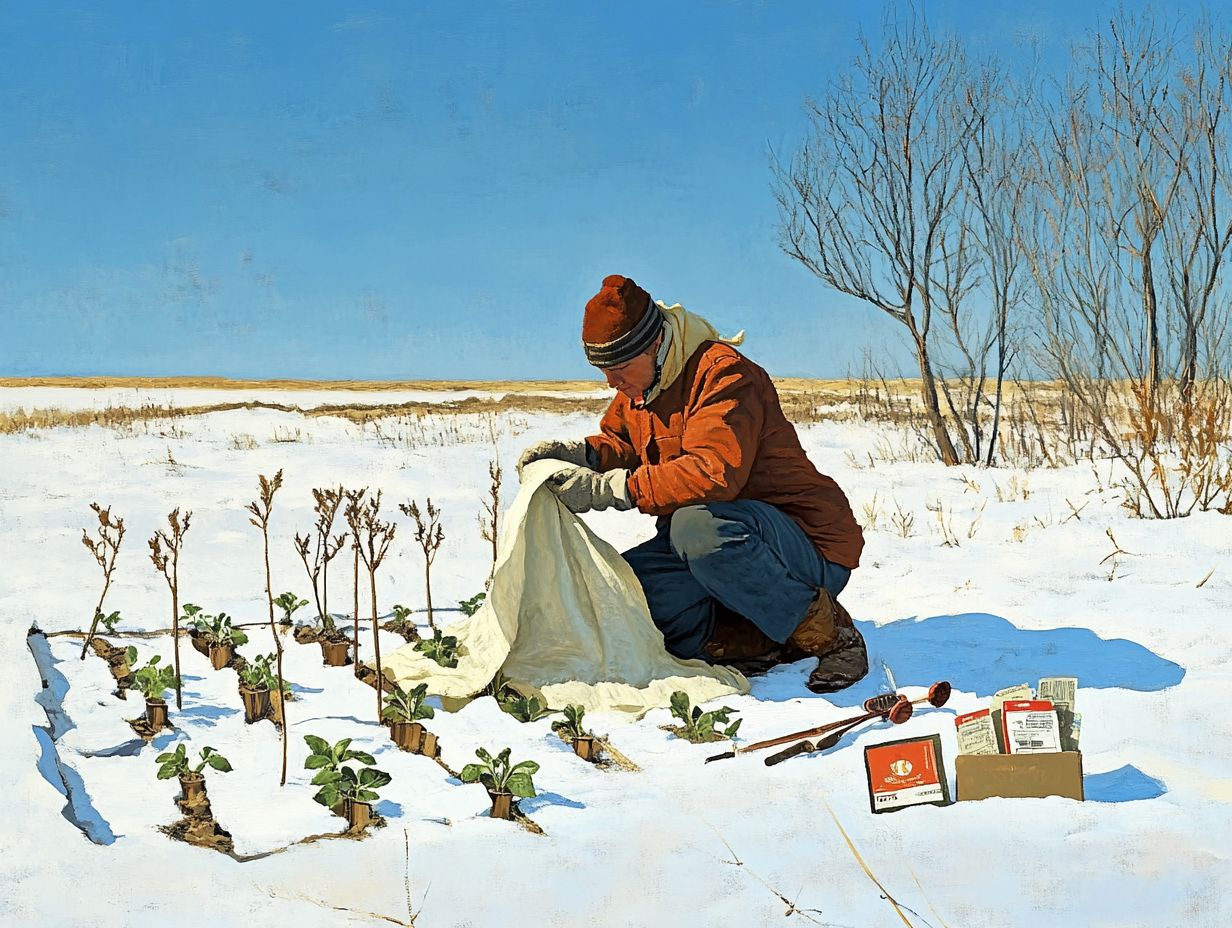
Implementing effective covering and insulating techniques is essential for protecting your crops from the harsh effects of frost and snow, ensuring their survival.
By utilizing various strategies like cloches and mulch, you can create a beneficial microclimate around your plants. Cloches, for instance, function like mini-greenhouses, allowing sunlight to stream in while trapping heat, effectively reducing that pesky nighttime chill.
A layer of mulch not only provides insulation for the soil but also retains moisture, further nurturing your plants. These methods significantly reduce frost exposure and foster a thriving environment, enabling your crops to stand resilient against unpredictable weather patterns.
Transitioning to Spring
Transitioning to spring means it’s time for you to prepare your soil for early spring planting and plants for the warmer weather ahead. This crucial step is essential for any gardener looking to maximize the potential of their planting seeds, all while being mindful of how climate change influences seasonal patterns.
Preparing Soil and Plants for Warmer Weather
Preparing your soil and plants for warmer weather is crucial for thriving growth and bountiful yields in your spring garden. For those interested in winter gardening, learning how to prepare your soil for winter crops can make gardening more enjoyable for both seasoned experts and newcomers alike.
Start with soil testing; it’s a vital first step. This process helps you identify any nutrient deficiencies and the necessary pH levels for optimal plant health. Nutrient deficiencies occur when your soil lacks the necessary elements plants need to grow healthy.
Effective planting techniques, such as utilizing raised beds and practicing crop rotation changing the types of plants you grow in a specific area each year can maximize sunlight exposure and encourage root development.
Incorporating compost is another excellent strategy it enriches your soil by introducing essential microorganisms and nutrients that support robust plant growth.
This natural addition enhances soil structure and boosts moisture retention, making it a sustainable choice for nurturing a thriving garden as the warmer months approach.
Watch this video for tips on preparing your garden for spring.
Frequently Asked Questions
What crops should I focus on preparing for spring during the cold weather?
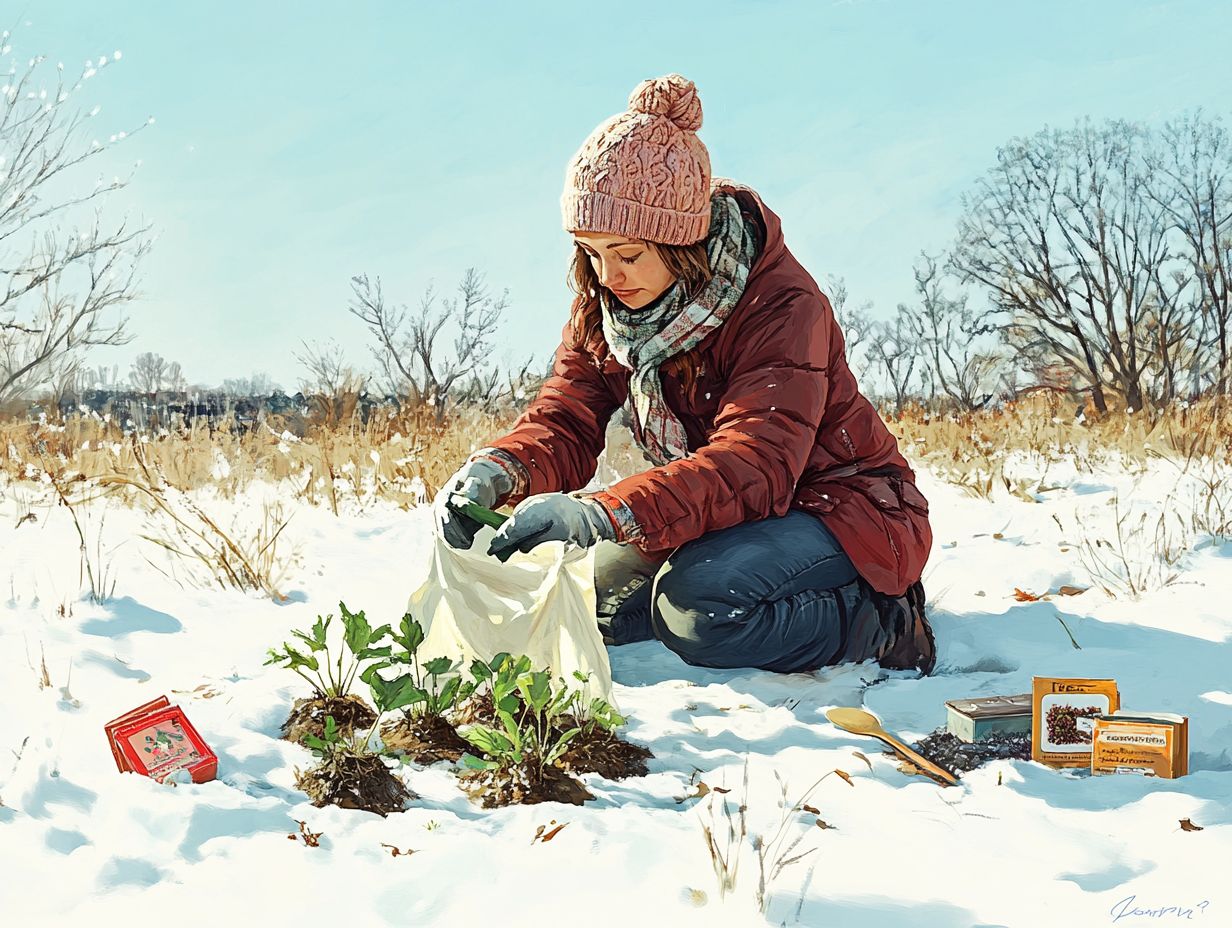
Some common crops to focus on for spring preparation in cold weather include lettuce, spinach, kale, carrots, and radishes. To ensure success, consider preparing your soil for spring in cold climates.
What are some methods for protecting crops during the cold weather?
Some methods for protecting crops during the cold weather include using row covers, mulching, and building cold frames or hoop houses.
When is the best time to start preparing my crops for spring during the cold weather?
The best time to start preparing your crops for spring during the cold weather is about 4-6 weeks before the last expected frost date in your area, which is crucial for understanding how to prepare your garden for early spring.
How can I prevent frost damage to my crops during cold weather?
To prevent frost damage, cover your crops with a row cover or tarp at night.
Remove the cover during the day when temperatures are warmer.
What are some tips for maintaining healthy crops during cold weather?
Maintain healthy crops by providing proper drainage.
Water deeply but less often, and avoid using too much fertilizer.
What can I do to prepare my soil for spring during cold weather?
This fall, boost your soil’s health!
Add natural materials like compost or manure to improve its structure and nutrients for spring planting.

